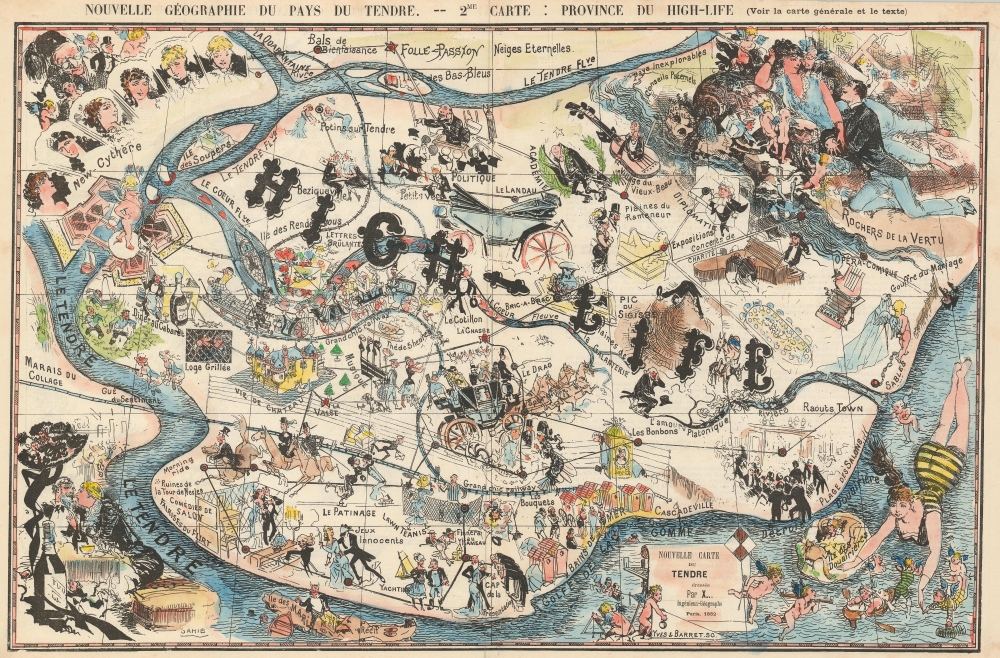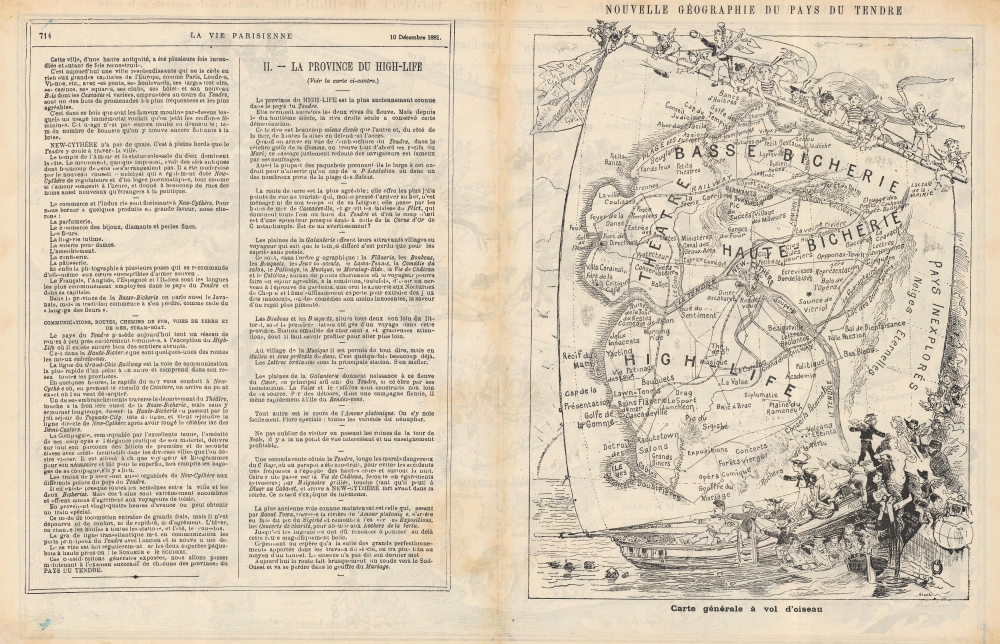This item has been sold, but you can get on the Waitlist to be notified if another example becomes available, or purchase a digital scan.
1881 Sahib Pictorial Map of Province of High Society in the Country of Love
HighLife-sahib-1881
Title
1881 (dated) 13.25 x 20.5 in (33.655 x 52.07 cm)
Description
Publication History and Census
This map was created by an artist known as Sahib and engraved by Yves and Barret for La Vie Parisienne and published in the December 24, 1881 issue. We have been unable to locate any other known examples.Cartographer
Yves et Barret (fl. c. 1870 - 1890) were French engravers active in the late 19th century. They engraved political cartoons and other images for French periodicals, including La Vie Parisienne. This partnership was known for creating works using gillotage, a now obsolete lithographic process wherein a drawing was made on or transferred to zinc and then dusted with resin, which adhered to the drawing. The resin then acted as an acid-resist when the entire plate was immersed in acid, creating a relief block that could then be inked and printed from. This printing technique was popular with newspapers, as it was completely compatible with blocks of type. More by this mapmaker...




